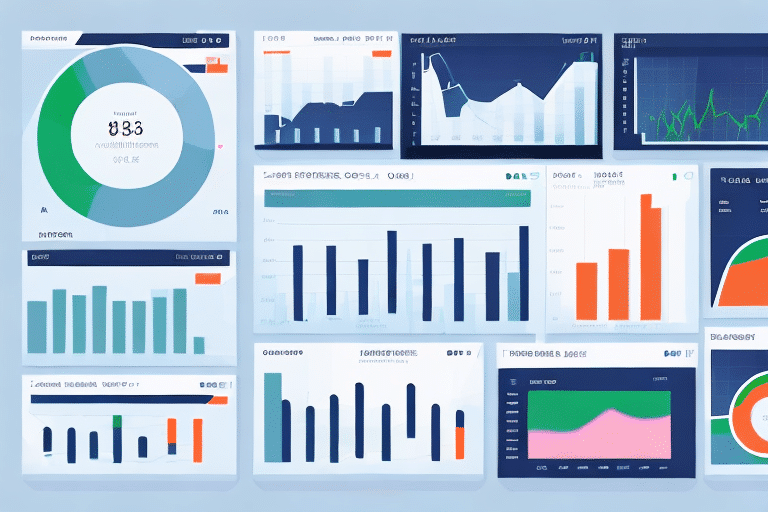Understanding Stockouts in E-Commerce
Stockouts occur when an e-commerce business runs out of stock for a particular product, preventing customers from making a purchase. Various factors contribute to stockouts, including inaccurate demand forecasting, unexpected surges in demand, supply chain disruptions, and delays in restocking. In the competitive e-commerce landscape, stockouts can lead to lost sales as customers turn to competitors to fulfill their needs.
Implementing a real-time inventory management system can help e-commerce businesses monitor stock levels effectively. Such systems provide alerts when inventory is low, enabling timely reordering and reducing the risk of stockouts. Additionally, leveraging historical sales data for demand forecasting allows businesses to anticipate customer needs and adjust inventory accordingly.
Another strategy to mitigate stockouts is to offer alternative products or suggest similar items to customers when a desired product is unavailable. This approach can help retain customers and mitigate the loss of sales. Furthermore, providing incentives like discounts or free shipping for restocked items can encourage customers to wait instead of seeking alternatives from competitors.
The Impact of Stockouts on E-Commerce Operations
Stockouts negatively affect several aspects of e-commerce operations. Primarily, they lead to lost sales and reduced revenue, as customers are unable to purchase the desired products. According to a Forrester Report, stockouts can decrease customer loyalty by up to 30%, as consumers may switch to competitors who have better stock availability.
Additionally, stockouts can cause operational inefficiencies. Handling returns and refunds for unfulfilled orders consumes time and resources, diverting focus from core business activities. Moreover, stockouts limit opportunities for cross-selling and upselling, potentially diminishing the total order value.
Furthermore, supply chain disruptions leading to stockouts can increase operational costs. Businesses may need to expedite shipping or source alternative suppliers to meet demand, resulting in higher expenses and impacting profit margins.
Negative Effects of Stockouts on Customer Experience
Stockouts significantly impact customer experience, leading to frustration and dissatisfaction. Customers expect prompt and reliable service from online retailers, and encountering out-of-stock items can disrupt their shopping experience. A 2023 e-commerce study indicates that 50% of customers are less likely to return to a store after experiencing a stockout.
Beyond immediate frustration, stockouts can harm a company's reputation. In the age of social media and online reviews, negative experiences are quickly shared, potentially deterring future customers. Moreover, prolonged stockouts can lead to financial losses due to missed sales opportunities and increased operational costs.
Measuring Stockouts in Your Online Store
Effectively measuring stockouts is essential for preventing future occurrences. Businesses can track stockout rates by monitoring the percentage of orders that include out-of-stock items at checkout. Additionally, tracking customer inquiries and complaints related to stockouts provides insights into the frequency and impact of stock unavailability.
Analyzing inventory turnover rates helps identify products that frequently experience stockouts. A high turnover rate indicates rapid sales, necessitating more frequent restocking. Conversely, a low turnover rate may suggest overstocking or declining demand.
Monitoring the time taken to replenish stock is also crucial. Longer replenishment times increase the likelihood of stockouts, especially for high-demand products. By understanding these metrics, e-commerce businesses can optimize their inventory management strategies to reduce stockouts and enhance customer satisfaction.
Tools and Techniques for Measuring Stockouts
E-commerce businesses can utilize various tools and techniques to measure and manage stockouts effectively. Point-of-sale (POS) inventory systems offer real-time tracking of stock levels, enabling immediate responses to inventory changes. Additionally, inventory forecasting and optimization software use advanced algorithms to predict demand patterns and adjust stock levels accordingly.
- Inventory Management Software: Tools like Shopify Inventory Management provide real-time tracking and automated reorder alerts.
- Predictive Analytics: Platforms such as Tableau help visualize sales trends and forecast future demand.
- Customer Feedback: Collecting feedback from customers about stock availability can offer qualitative insights into stockout impacts.
Understanding the root causes of stockouts is also essential. By analyzing supply chain processes and supplier reliability, businesses can identify and address underlying issues contributing to stock unavailability.
Best Practices for Preventing Stockouts
Preventing stockouts requires a strategic approach to inventory management. Implementing accurate demand forecasting is fundamental, leveraging historical sales data and market trends to predict future demand. Automated reorder points ensure timely restocking, reducing the risk of unexpected stock shortages.
- Safety Stock: Maintaining a buffer stock can accommodate unexpected demand spikes or supply delays.
- Supplier Relationships: Building strong relationships with reliable suppliers ensures timely and consistent product deliveries.
- Regular Inventory Audits: Conducting periodic audits helps identify discrepancies and optimize inventory levels.
Additionally, diversifying suppliers can mitigate risks associated with supply chain disruptions. By not relying on a single supplier, businesses can ensure alternative sourcing options during unforeseen supply issues.
Future Trends in Managing Stockouts in E-Commerce
The e-commerce industry continually evolves, with technological advancements shaping inventory management practices. Future trends in managing stockouts include the integration of artificial intelligence (AI) and machine learning for more precise demand forecasting. These technologies analyze vast datasets to identify subtle trends and predict demand with greater accuracy.
Moreover, the adoption of Internet of Things (IoT) devices in inventory management will enhance real-time tracking and automation. IoT-enabled sensors can monitor stock levels and environmental conditions, providing actionable data to optimize inventory processes.
Another emerging trend is the seamless integration of online and offline inventory systems, enabling unified inventory management across multiple sales channels. This integration ensures consistent stock information, reducing the likelihood of stockouts and improving the overall customer experience.
Conclusion
Stockouts present a significant challenge for e-commerce businesses, impacting sales, customer satisfaction, and operational efficiency. By understanding the causes and implementing robust inventory management strategies, businesses can minimize stockouts and enhance their competitive edge. Leveraging advanced technologies and adhering to best practices ensures that e-commerce operations remain responsive to customer demands, fostering loyalty and driving sustained growth.






















